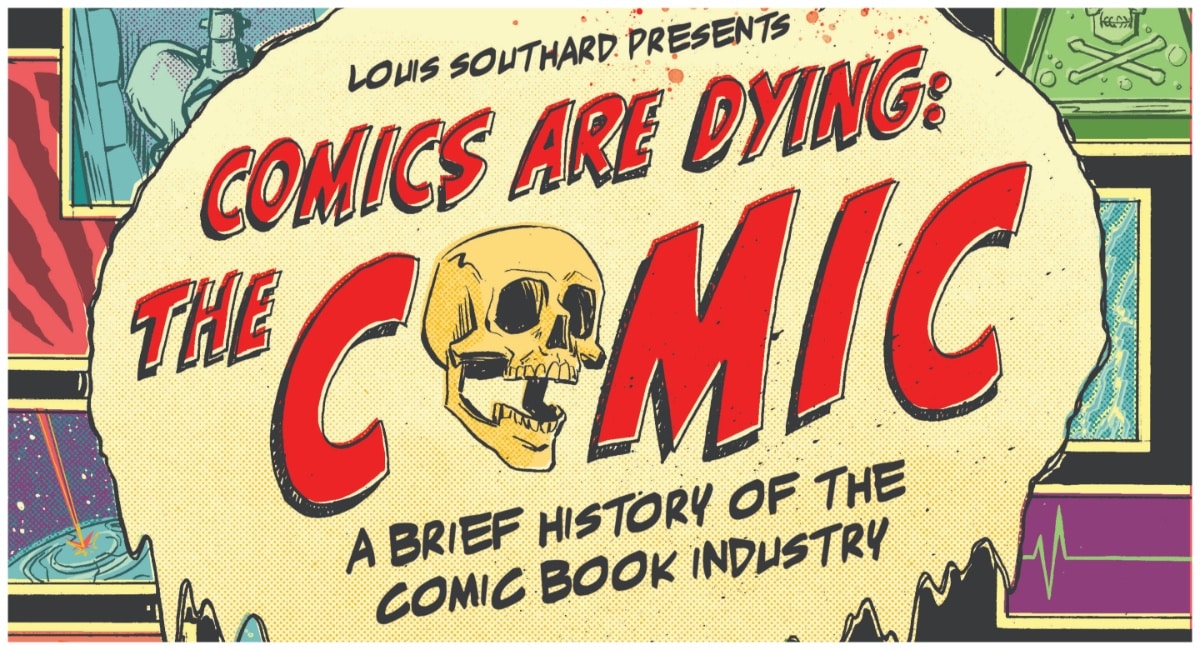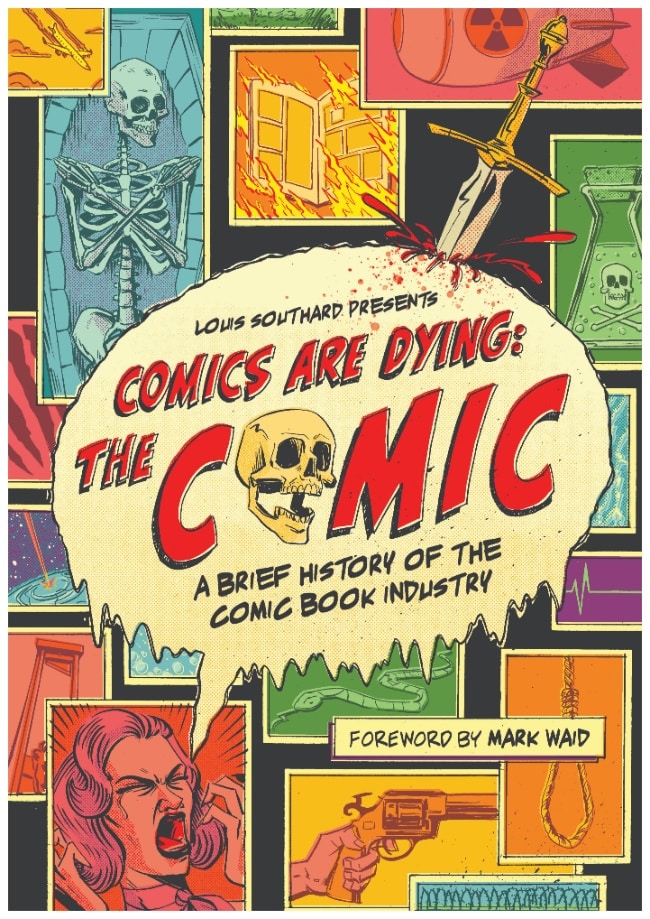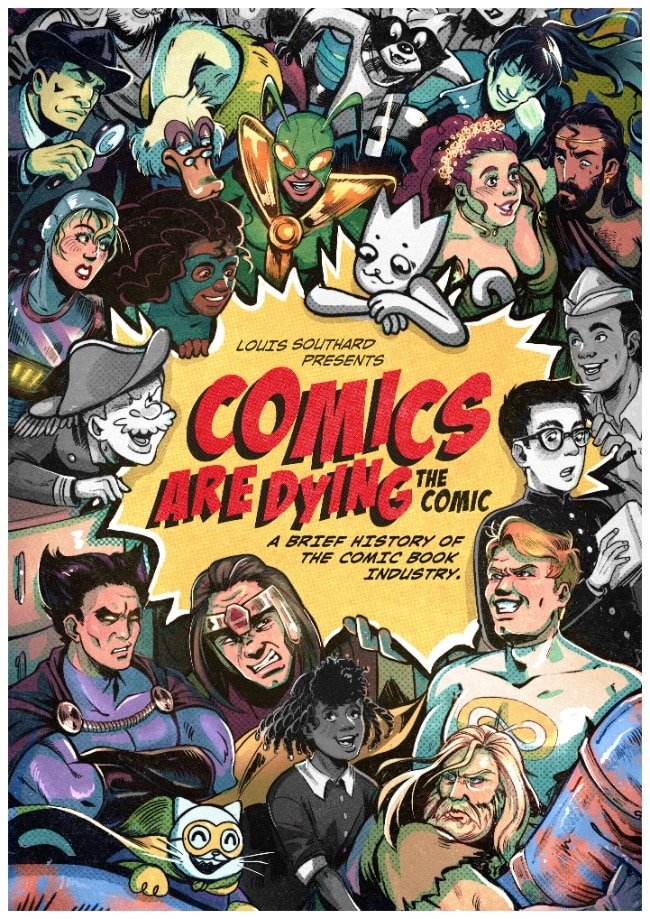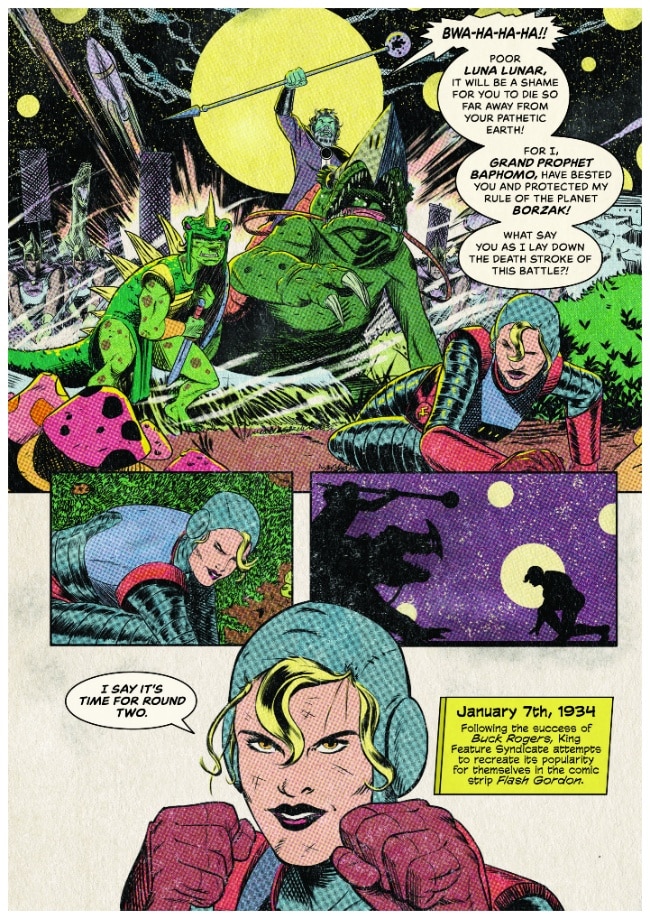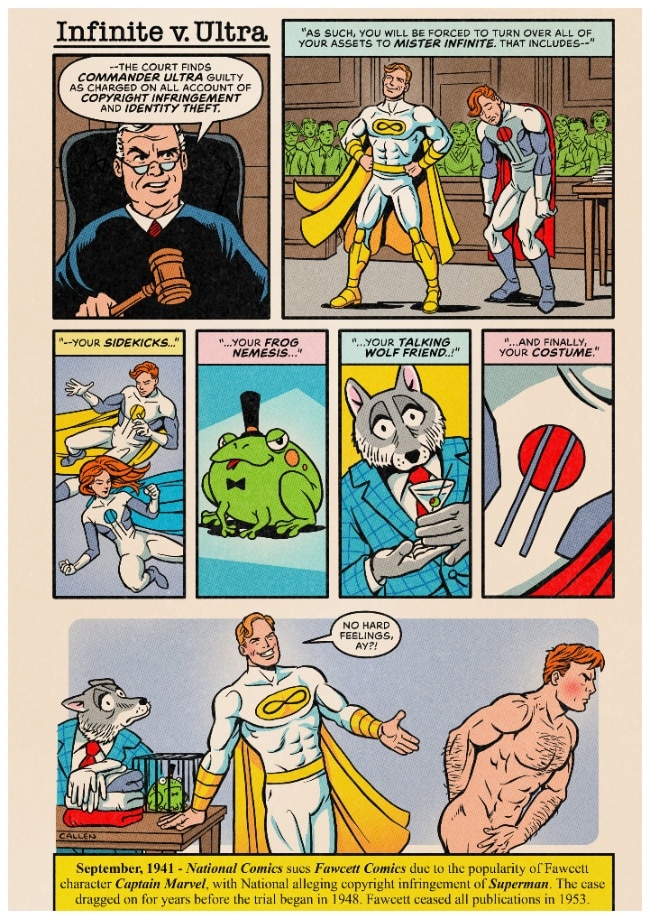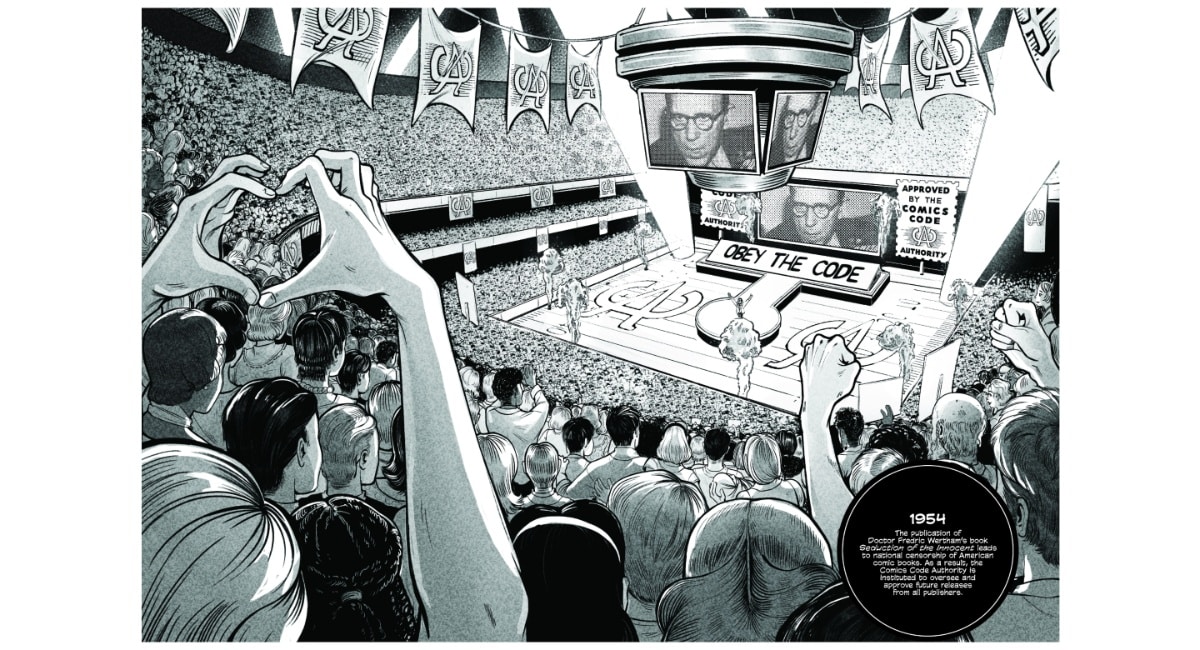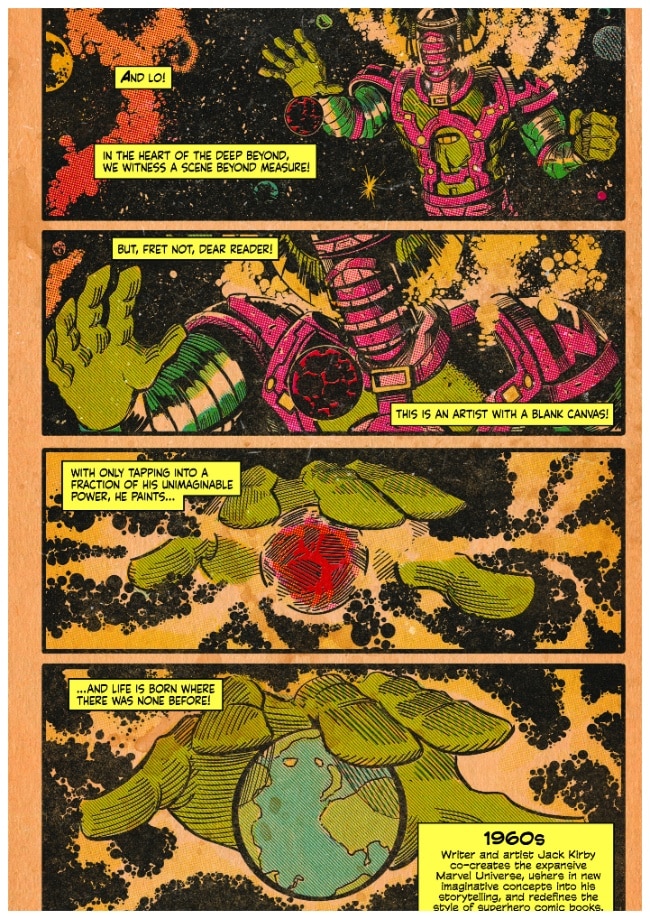Louis Southard (The Blackout Bombshell/Midnight Western Theater/Villains Seeking Hero) is leading the charge on the brand-new, crowdfunded anthology, Comics Are Dying: The Comic.
The comic includes the work of 100 creators such as Serg Acuña, Richard Pace, Netho Diaz, and an introduction from comics legend himself Mark Waid.
A description of the project states that: “For the better part of a century, people have said that comic books are dying. Crisis after crisis, the comic book industry has survived and lives to this day. So, to celebrate its harrowing journey into the 21st century, a satirical OGN about the history of comic books has taken shape. The book is about the history of comic books using one-page short story comics with a new artist for every page. The main goal was to create a diverse team of over 100 people featuring a collective of established as well as up-and-coming artists from all walks of life for this.”
The Beat caught up with Southard over email to talk about Comics Are Dying came to be and more.
Diego Higuera: Comics Are Dying: The Comic takes what appears to be a satirical approach to the history of comic books. What prompted the decision to explore this theme through an anthology format?
Louis Southard: I think the average person, when they think about comic books, they think about superheroes. Superheroes by themselves are a loaded genre because your ’60s Marvel Bullpen superhero comic is an incredibly different animal than let’s say your ’90s Image extreme type of superhero comic. But, beyond capes and tights, you have pulp fiction, newspaper strips, European science-fiction, sword-and-sorcery, funny animals, and plenty of other types of comic book genres. So, if we were going to make a comic celebrating all of comics, an anthology was the only way to best represent all of the different art styles, tones, and presentations from all across history.
Higuera: With more than 100 creators involved, how did you ensure a cohesive narrative, while celebrating the diversity of styles and voices?
Southard: Fortunately, the narrative is history. Each page is a different one-page story highlighting a significant or historical moment in comics history; however, your more observant reader will notice that many of the one-page stories intersect in one way or another, which is a great deal of added fun. In terms of diversity, my incentive for even making this book was spawned from my disgust of the hatred and ignorance found within pop culture fandom. I wanted to make a book showcasing some of the best talents working today and how they all come from different walks of life. But, no matter how different we may be, we all relate in our love of the arts and of community. This is a book about the joy of working together and trying to make something beautiful and fun.
Higuera: The anthology features one-page short story comics. How did you approach crafting impactful narratives within this constraint?
Southard: Honestly, it’s much easier to get to the point of a story using one page than a whole 24-page comic book (ha ha!). My process was to write one pagers that boiled down the event or fact to its barest elements and assigning the right artist to perfectly capture that vibe. For instance, there’s this fantastic artist and fellow named Frederik Hornung who can do one hell of a Jack Kirby homage. So, you ask yourself “What’s the biggest Kirby thing when he was working for Marvel?” And I think most people would say The Galactus Saga. So, with those in mind, you go nuts with ideas and make something like that. Basically, we’re playing the hits with new voices and new ideas.
Higuera: Could you share any standout contributions or themes readers can expect to encounter throughout the anthology?
Southard: All of the artists are standouts, and I love them all equally haha. I will say that I must thank writer Mark Waid for providing the foreword and for his support in this project. I also must thank the Joe Kubert School and the Savannah College of Art and Design. The student bodies and faculties from both of those fine institutions have been instrumental in the formation of this book. In regard to the themes, this book will make you smile. It’s an optimistic love letter and people will see themselves in this book. Whether it’s from an artistic viewpoint or a personal one or both. This is not just a celebration of comics, it’s a celebration of people too.
Higuera: How do you see Comics Are Dying contributing to discussions about the past, present, and future of the comic book industry
Southard: This book is a jumping on point. I want it to be something you can hand to your friend or family member who is curious about comics. With this being a brief history across 100 pages, I’m afraid I didn’t go into severe detail of the past 200 years of comics! But, I hope this will motivate people to learn more. Not only that, but to remind and teach people how progressive comics have always been with some of the earliest and respectful portrayals of people in pop culture. It’s also a springboard for people to meet some of the greatest living artists working today. Your favorite new artist might be here in this book and you’re just about to meet them. So, it’s an accounting of the past, a celebration of those currently alive and working in the present, and hopefully a sign of good things to come in the future.
To find out more about Who Killed Nessie? check out the crowdfunding page here.
Related
Source link

